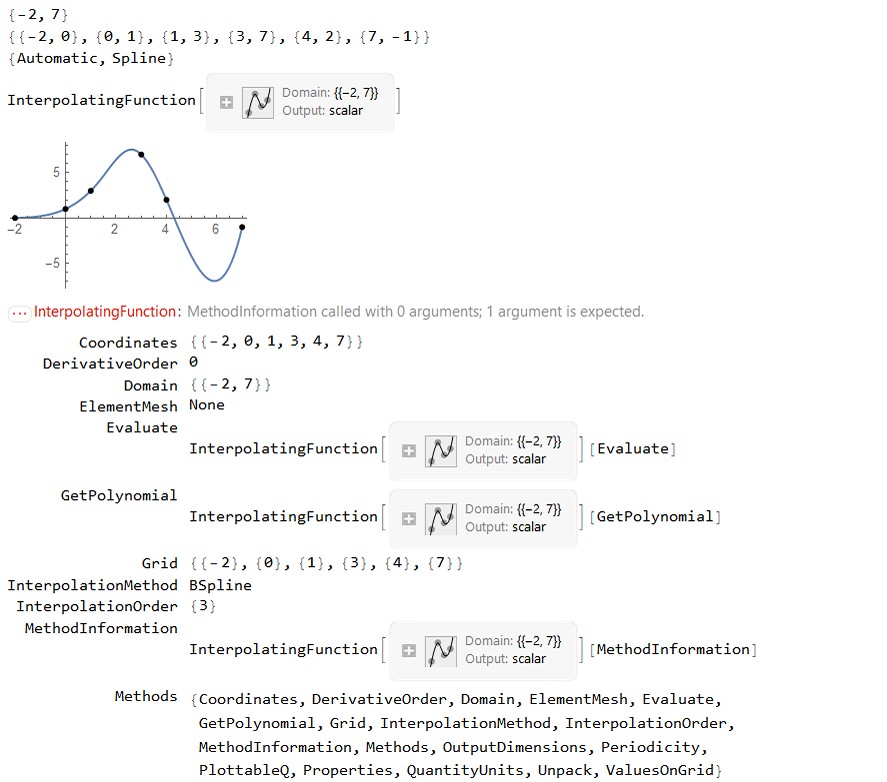Thanks, Nicolay. This works indeed. I could not find that anywhere. Is it an undocumented feature?
If you write:
TableForm[{#,func[#]}&/@globFunc["Methods"]]
you get all the "properties" and you can see that the property "MethodInformation" needs more arguments and that the properties "Evaluate" and "GetPolynomial" do not work like this.
But I get the information which I really need: "InterpolationOrder", "InterpolationMethod", "Domain", "Coordinates", "ValuesOnGrid".
This helps.
Block[{xs = {-2, 0, 1, 3, 4, 7}, ys = {0, 1, 3, 7, 2, -1}, data, xS,
xE, func, order = Automatic, method = "Spline"},
xS = Min[xs]; xE = Max[xs];
data = Thread[{xs, ys}];
func = Interpolation[data, InterpolationOrder -> order,
Method -> method];
Print[Column[{
{xS, xE},
data,
{order, method},
func,
Plot[func[x], {x, xS, xE},
Epilog -> {PointSize[Medium], Point[data]},
AxesOrigin -> {0, 0}, ImageSize -> Small]
}]];
Print[Grid[{#, func[#]} & /@ globFunc["Methods"],
Alignment -> {{Right, Left}, Top}]]
];

